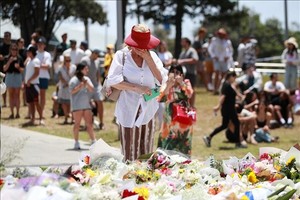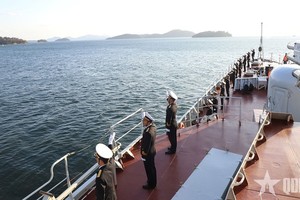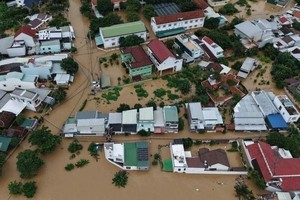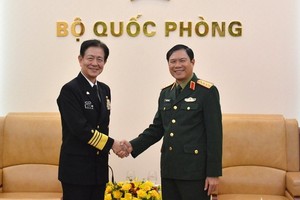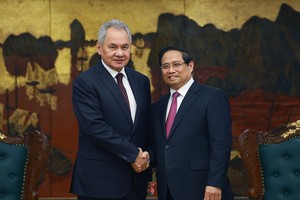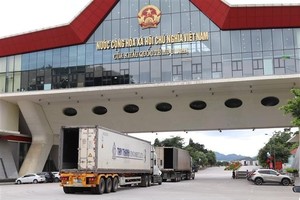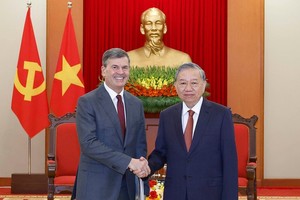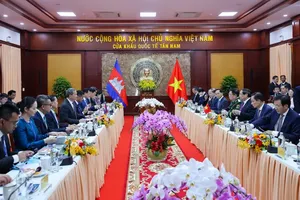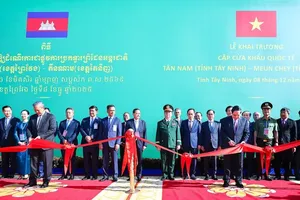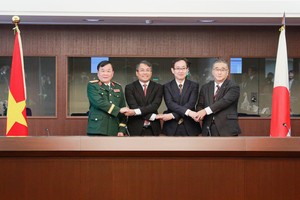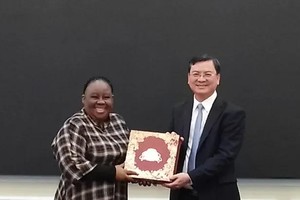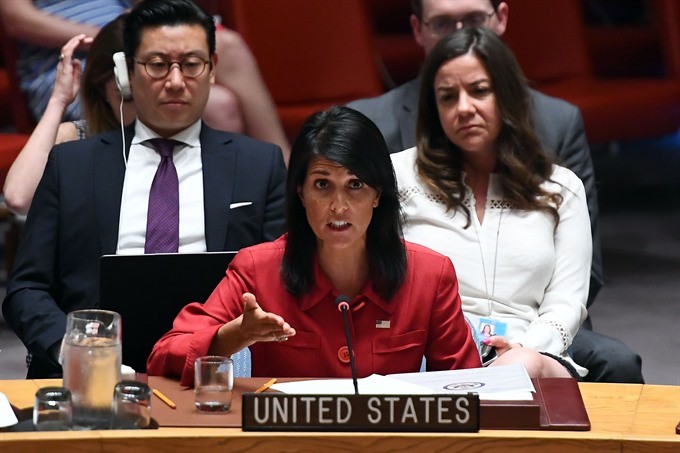
In a hard-hitting address to the council, US Ambassador Nikki Haley said Tuesday’s ICBM test had made "the world a more dangerous place," and that Washington was ready to use force if need be to deal with the threat of a nuclear-armed Pyongyang.
But after US and South Korean forces fired off missiles simulating a precision strike against North Korea’s leadership, Haley also made clear Washington would exhaust diplomatic avenues before it resorts to confrontation, promising to submit a new draft sanctions resolution within days.
"Make no mistake, North Korea’s launch of an ICBM is a clear and sharp military escalation," Haley warned in a full-throated denunciation of a missile test Kim Jong-un styled as a gift to "American bastards."
"The United States is prepared to use the full range of our capabilities to defend ourselves and our allies," she said. "One of our capabilities lies with our considerable military forces. We will use them if we must. But we prefer not to have to go in that direction."
While Pyongyang’s actions were "quickly closing off the possibility of a diplomatic solution," Haley said "there remains more that the international community can and must do, diplomatically and economically."
The US focus, she told the council, was on how to push through tighter sanctions, which could target countries that continue to trade with North Korea, curb oil exports to the isolated country, tighten air and maritime restrictions and impose travel bans on its officials.
And she singled out China -- increasingly in the crosshairs of the US administration as the North’s sole major ally and economic lifeline -- as key to any diplomatic solution.
"We will work with China -- we will work with any and every country that believes in peace -- but we will not repeat the inadequate approaches of the past that have brought us to this dark day."
China, Russia sceptical
Tuesday’s launch marked a milestone in Pyongyang’s decades-long drive for the capability to threaten the US mainland with a nuclear strike, and poses a stark foreign policy challenge for Donald Trump.
The US president had dismissed the idea of the North possessing a working ICBM, vowing it "won’t happen", but experts said the missile could reach Alaska or even further towards the continental US.
Amid international condemnation of the test, South Korean and US military forces launched short-range ballistic missiles of their own into the Sea of Japan less than 24 hours after.
While the new US sanctions push won backing from France, it raised immediate protests from fellow permanent Security Council member Russia whose Deputy Ambassador Vladimir Safronkov warned that "sanctions will not resolve the issue."
China did not immediately address the call for sanctions, but its Ambassador Liu Jieyi once more pushed Beijing’s alternative proposal for talks based on a freeze of North Korea’s missile and nuclear tests, in exchange for a halt to US-South Korean military drills.
"China has always been firmly opposed to chaos and conflict on the Korean peninsula. Military means must not be an option in this regard," Liu said.
The South’s new President Moon Jae-in, who backs bringing Pyongyang to the negotiating table, said the international community would look at "ramping up sanctions" in response to its latest "serious provocation."
The US and South Korea are in a security alliance, with 28,500 US troops stationed in the South to protect it.
Pyongyang says it needs nuclear weapons to defend itself against the threat of invasion and multiple sets of UN sanctions have failed to halt its atomic and missile programmes.
Questions however remain over the precise capabilities of the Hwasong-14 missile.
The missile only travelled little more than 900 kilometres to come down in the Sea of Japan, but the altitude it reached -- more than 2,800 kilometres according to Pyongyang -- demonstrated it can travel far further.
South Korea’s Defence Minister Han Min-koo put its range at 7,000 to 8,000 kilometres -- far enough to put US Pacific Command in Hawaii within reach.
